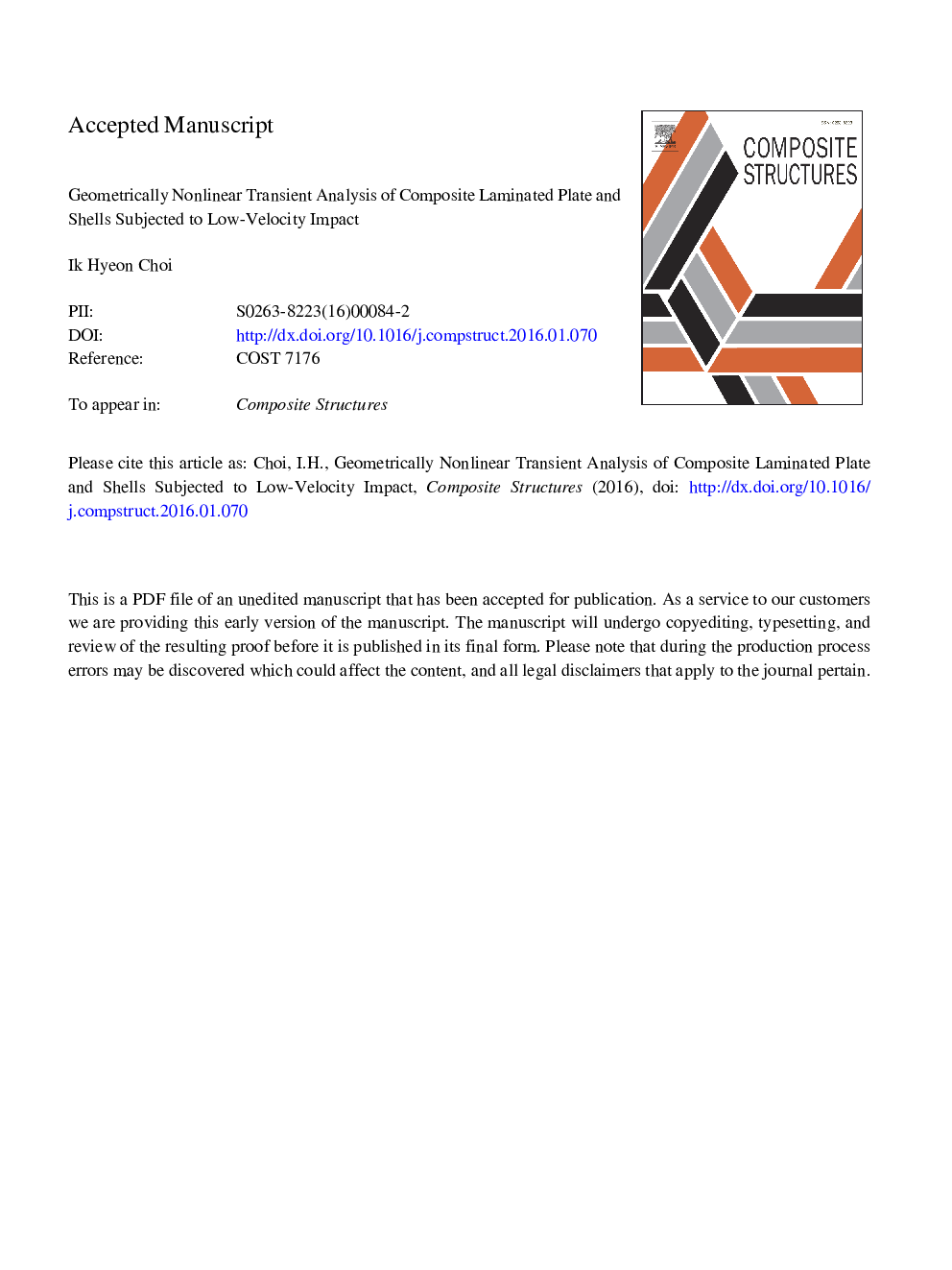| Article ID | Journal | Published Year | Pages | File Type |
|---|---|---|---|---|
| 6705850 | Composite Structures | 2016 | 24 Pages |
Abstract
In this study, the transient responses of a composite laminated plate and cylindrical shells subjected to low-velocity impacts were investigated numerically. The shear deformation theory of a doubly curved shell and von Karman's large deflection theory were used to develop a geometrically nonlinear finite element program. It is well-known that in the case of a flat plate with fixed boundary edges, a geometrically nonlinear analysis yields larger contact forces and smaller deflections than a corresponding linear analysis. However, in the case of cylindrical shells, an opposite result was found in this study; a geometrically nonlinear analysis exhibited smaller contact forces and larger deflections than a corresponding linear analysis. The reason for this opposite result is described in this study. Conversely, with a plate and shells that have the same size, shells with a larger curvature exhibited smaller deflections and larger contact forces. The strain distribution at the bottom surface of the plate/shells using the geometrically nonlinear analysis exhibited markedly or only marginally larger tensile areas than those produced using the linear analysis.
Keywords
Related Topics
Physical Sciences and Engineering
Engineering
Civil and Structural Engineering
Authors
I.H. Choi,
